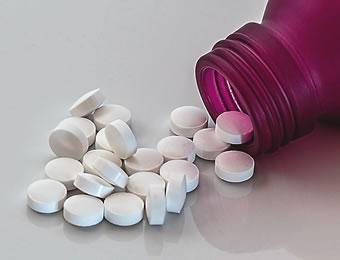For quite a large number of people, paracetamol is usually the go-to medication. The reason may not be farfetched. It is easily accessible as an over-the-counter pain killer and anti-pyretic; it is affordable and there is hardly any side effect such as irritation of the stomach, constipation, dizziness when used as prescribed. Sadly, this makes it an easily abused medication.
Mrs Ebere is a businesswoman and for her paracetamol is one of the ever-present contents of her bag. According to her, “travelling by road can be very stressful, especially long distance. So, before we even take off, I take two tablets of paracetamol to prevent headaches and body pains because of the stress of the journey. I don’t think there is a day that passes that I don’t take it at least once a day.”
While there are those of the ilk of Mrs Ebere who take paracetamol as a prophylactic, there are others whose obsession with it borders on addiction. For this category of people, they take it for the slightest of aches and pains, even when it is not necessary. For instance, it is not unusual for this set of people to take paracetamol for a headache they know a few hours of sleep would alleviate. Others would rather take paracetamol for days to treat a pain rather than do the needful and see a doctor.
A study on “Paracetamol Toxicity: Epidemiology, Prevention and Cost to the Health Care System,” published in an international journal of medicine, QJM, in 2012, showed that “incidence of poisoning from paracetamol has increased over the past decades and paracetamol is now the most common drug in self-poisoning with a high rate of morbidity and mortality.”
Herbert A. Obu, of the Department of Paediatrics, College of Medicine, University of Nigeria, Enugu Campus and University of Nigeria Teaching Hospital, Enugu State, also pointed out that “paracetamol was commonly given to children on “self-prescription” basis and the tablet formulation was most frequently used, with the possibility of misuse and overdose.” This was made known in a research article entitled “Paracetamol use (and/or misuse) in children in Enugu, South-East, Nigeria,” published in the journal, BMC Pediatrics, 2012 edition.
Though paracetamol is a relatively safe medication, taking it with impunity, especially for extended periods of time can be devastating and sometimes, fatal.
Speaking to Saturday Tribune, Mrs. Idowu Oyewale, a pharmacist and senior staff member at the Directorate of Pharmaceutical Services, Oyo State Hospital Management Board said, “Self-medication is wrong, even when it is done with an over-the-counter painkiller like paracetamol. It is not an addictive drug, but it can be abused. The ideal dosage is two tablets three times daily for an adult and this should be as prescribed by a doctor. Taking the proper dosage without a prescription by a doctor is also a form of abuse. This is because the individual may have an unknown disease and abusing paracetamol can complicate issues. For instance, someone with a history of hepatitis or liver disease that abuses paracetamol can aggravate the disease. Also, someone who fasts a lot would be doing his or her liver no good if he or she abuses paracetamol. Sometimes, you hear of people taking paracetamol on a daily basis. This is also wrong. When someone takes as much as seven grammes of paracetamol (14 tablets) in a day, this can qualify to be called an overdose. As is written on the pack and recommended by doctors, once a fever or ache persists after three days of taking paracetamol, the person should go back to the doctor, not continue with self-medication. Abuse of paracetamol can lead to liver cirrhosis which can cause death.”
Experts also add that paracetamol taken in combination with acute or chronic alcohol abuse can result in liver failure.
There have also been studies and reported cases of how long-term intake of paracetamol can pose a risk for renal failure, which is often irreversible, and might necessitate life-long dialysis or a kidney transplant. One study suggested that combining paracetamol and even light amounts of alcohol can more than double the risk of kidney disease.
According to these researchers, taking the recommended dose of paracetamol, combined with a small to moderate amount of alcohol, produces a 123 per cent increased risk of kidney disease. They recommended that in general, people who regularly consume one should not use the other. That is, if one takes paracetamol daily for chronic pain, they should avoid alcohol and if one drinks alcohol regularly, they should try another painkiller or avoid over-the-counter pain medications altogether.
WATCH TOP VIDEOS FROM NIGERIAN TRIBUNE TV
- Let’s Talk About SELF-AWARENESS
- Is Your Confidence Mistaken for Pride? Let’s talk about it
- Is Etiquette About Perfection…Or Just Not Being Rude?
- Top Psychologist Reveal 3 Signs You’re Struggling With Imposter Syndrome
- Do You Pick Up Work-Related Calls at Midnight or Never? Let’s Talk About Boundaries







